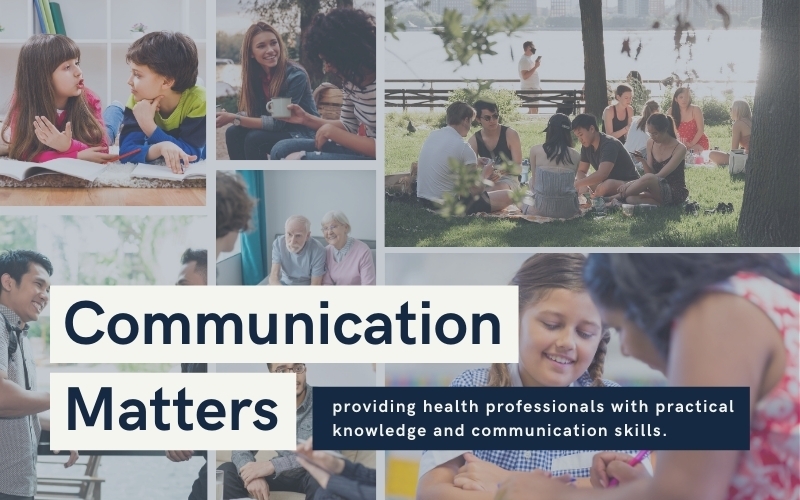
Not EnrolledTake This Course
Special launch pricing $275-$330
Special launch pricing $275-$330
COURSE INCLUDES
20 Lessons
40 Topics
11 Quizes
Course Certificate
Course
Materials
Course
Course overview
Communication Matters is an online course for health professionals designed to provide practical knowledge and communication skills to enhance the practitioner-patient relationship. The Communication Matters course is tailored to GPs and medical specialists, allied health professionals, researchers, educators, health executives and health service delivery personnel. Upon successful completion, participants will be awarded a certificate of completion for CPD purposes. Read all about the course, the topics and presenters here.Who is this course for?
- Medical and allied health practitioners interested in developing growth-promoting relationships with their patients.
- Health professionals enrolled in the ASLM Fellowship. This course will earn candidates 30 points towards the Fellowship.
How long will this course take
The course comprises around five lecture hours of practical CPD-style education. In addition to the lecture hours, you will need to allow additional time for self-study including required and optional reading, participation and assessment tasks. We recommend that you allow 2 hours of self-study time for each 1 hour of lectures.Learning outcomes:
By the end of the course, participants will be able to:- Explain the importance of practitioner self-care as the foundation for effective patient engagement
- Demonstrate how healthcare practitioners can communicate effectively and appropriately to provide quality care
- Demonstrate how to promote health and wellbeing and empower patients through effective health education
- Apply the principles of relationship, patient communication, empathy and rapport
Course modules:
Provider self-care- Importance of self-care
- Patient-provider relationship
- Non-verbal communication
- Using subject matter expertise
- Problem-solving vs appreciative inquiry
- Inquiry styles
- Reflections, empathy, listening
- Building positivity
- Therapeutic alliance and resistance
- Vision for health
- Values and needs
- Motivational interviewing
- Building efficacy
- Decisional balance – addressing ambivalence
- Drawing visual maps
- Scaling ruler questions
- Nudging
- Quick Intervention for Change (QIC)
- Walking consultations
- Pre-contemplation to contemplation
- Tell me what to do – how to respond when your client asks you to tell them what to do
- Why silence is useful
Inclusions:
- 3 years access to the course
- Access to our Education Manager for course questions
- Around 5 hours of recorded lectures
- Required and recommended reading
- Participation and assessment tasks
- Comprehensive reference lists
- Course group for peer support and networking (coming soon)
- Certificate of completion for CPD purposes
Enquiries:
For enquiries related to this or any other ASLM course, please contact ASLM’s Education Team at education@lifestylemedicine.org.au or call +61 3 7020 6996.Other ASLM courses and workshops
ASLM hosts a variety of in-person and online courses and workshops across Australia and New Zealand throughout the year. Designed to increase participants’ understanding of the theory and application of Lifestyle Medicine, they can be undertaken as individual sessions to support professional development or to contribute towards ASLM Fellowship points.Materials
